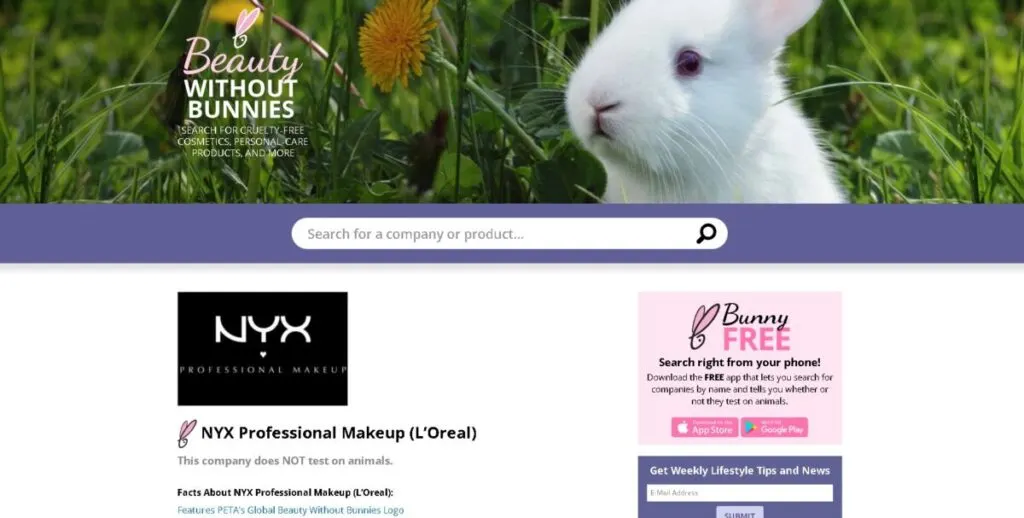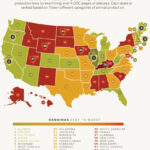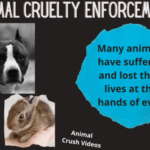In an era where the intersection of beauty and ethics is becoming increasingly pronounced, many consumers are questioning the values inherent to the brands they support. The discussion about whether makeup brands are animal cruelty-free has magnified, with NYX and CoverGirl often placed under the microscope. This dual branding—wherein both are marketed under the umbrella of ethical beauty, yet have complex backstories—merits a closer examination.
NYX, a brand founded in 1999, has garnered an enthusiastic and loyal following. Its vibrant array of products is celebrated for inclusivity and affordability. As an offshoot originating within the dynamic landscape of beauty, NYX has made claims about its stance on animal testing that resonate strongly with both environmentally-conscious consumers and animal activists. Conversely, CoverGirl, a more established entity in the makeup world, has also been advancing its agenda towards cruelty-free practices, yet the nuance lies in their operational methodologies and business affiliations.
At the core of this inquiry is the murky definition of what it truly means for a brand to be “cruelty-free.” The term often leads consumers to interpret it as a blanket statement that no animals were harmed in the production of the makeup. However, the reality is more convoluted. Furthermore, both NYX and CoverGirl are owned by parent companies who may have differing policies regarding animal testing practices. This duality creates inherent tension and confusion among consumers striving to align their shopping habits with their ethical beliefs.
NYX has positioned itself firmly in the cruelty-free camp, operating under the guidance of PETA’s cruelty-free certification. The brand asserts that it does not conduct testing on animals at any stage of product development and does not allow third parties to do so on its behalf. This commitment is laudable; however, it should be noted that the beauty industry is fraught with complexities. NYX’s extensive market reach includes many international territories where animal testing remains a regulatory necessity. These circumstances present an ethical dilemma, muddying the waters for well-intentioned consumers seeking to avoid animal exploitation.
On the other side of the spectrum, CoverGirl’s transition towards a cruelty-free ethos was catalyzed by consumer demand for ethical products. In recent years, the brand has taken significant strides to eliminate animal testing from its practices. In 2018, CoverGirl officially received certification from PETA, effectively cementing its status as cruelty-free. This shift was significant, considering CoverGirl’s historical ties to animal testing, as it had unequivocally relied on such practices to substantiate product safety claims previously. Thus, while CoverGirl has undertaken major reforms in its operations, it’s essential to understand that the legacy of testing leaves an indelible mark on its reputation.
The debate over the authenticity of their cruelty-free claims often leads consumers to be skeptical. Some may question whether the transition of CoverGirl to a cruelty-free brand is somewhat disingenuous—merely a marketing tactic to capitalize on the growing demand for vegan and cruelty-free products. Conversely, NYX attracts admiration for its transparency and advocacy, yet those same consumers must grapple with the nuances of the beauty market and understand the implications of the brand operating under corporate structures that do not entirely share the same ethical commitments.
On a deeper level, the fascination surrounding these brands transcends their individual policies; it highlights a substantial cultural shift towards ethical consumption. Today’s consumers are not merely seeking beauty products; they are seeking a narrative, a story that aligns with their values. NYX and CoverGirl represent two excellent case studies in how brands can evolve in response to consumer demands. The way they navigate these internal and external pressures offers insight into the evolving nature of consumer-brand relationships.
Social media amplifies this discourse further. Platforms like Instagram and TikTok cultivate activists who wield considerable influence. Their reach creates a ripple effect; as they advocate for cruelty-free options, they contribute to a heightened awareness of animal rights issues within the beauty industry. The fervor with which these discussions are carried out can lead to tangible changes within corporate structures, illustrating how market pressures can compel companies to adjust their practices to remain relevant.
Upon examining NYX and CoverGirl, it is palpable that they are navigating a landscape that is in constant flux. While both brands claim to uphold cruelty-free principles, the journey they have undertaken diverges significantly based on their heritage, corporate affiliations, and consumer expectations. This mosaic of ethical considerations presents a rich tapestry of choices for beauty consumers who prioritize animal welfare in their buying habits.
Thus, while both NYX and CoverGirl are set on a path towards more ethical practices, the clarity of their cruelty-free commitments remains nuanced. There are no easy answers when addressing the imbroglio that is animal testing in the beauty industry. Consumers who are passionate about animal rights must continue to investigate, question, and challenge brands to ensure they remain accountable to the promises they make. In an ever-evolving marketplace, it is the consumers who hold the power to enforce change, driving home the necessity for transparency and ethical accountability across all facets of the beauty industry.
In conclusion, the duality of NYX and CoverGirl’s branding as cruelty-free illustrates the complexities of modern ethical consumption. While both brands strive to align their operations with consumer values, the labyrinth of regulations and corporate structure reveals that true transparency is essential for fostering trust. The dialogue surrounding animal cruelty in beauty not only underscores the importance of ethical practices but also reflects a broader cultural shift towards a more compassionate approach to consumption. Choice and awareness go hand in hand, compelling brands to evolve, lest they risk falling behind in an increasingly conscientious marketplace.








